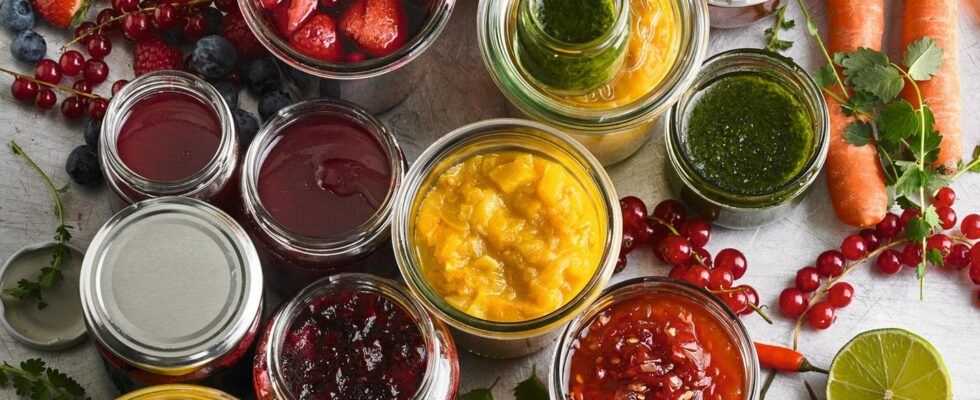Preserving fruit – how does it work?
With homemade jams, jams and chutneys, you can extend the taste of the most beautiful time of the year into winter. When the fruit is preserved, it is heated up and sterilized.
This is done in a special jar with a rubber ring. The lid is fixed with spring clips. The air in the jar expands, but can escape between the jar and the lid like a valve. Incidentally, these special glasses were developed by the entrepreneur Johann Carl Weck, after whom they are also called preserving jars and the technology called preserving.
When the glasses cool down, the air contracts, creating a vacuum that sucks the lid tightly against the glass. This prevents germs from penetrating the food. Preserves can be kept for up to a year – if the jars are stored in a cool, dark and dry place. So, go ahead and conserve the summer!
Video tip: Boil jam properly
Which fruits are suitable for preserving?
Only perfect fresh fruit is used for canning and jam! Overripe fruits could ferment and spoil what has been cooked.
If you use fruit from your own garden: You can also freeze the fruit and only make jam when you have harvested enough. Incidentally, the boiling time of the different varieties varies greatly. You can always find the right time in the respective recipe. For example, you can boil cherries, boil apples, boil pears, boil tomatoes or boil gooseberries.
Always clean the fruit for the jam first and then weigh it – otherwise the amount of sugar is incorrect and the jam will turn out too sweet.
Reduce fruit properly
To prevent the jam jars from shattering when the hot liquid is poured in: rinse clean jars with hot water and place them on a wet tea towel when pouring them. Then close the lids tightly with wire brackets or clamps and rubber rings and let them cool down. They can be removed once the jars have cooled completely.
There should then be a strong negative pressure in the glass so that the lid is pressed firmly onto the glass. If the lid is only loosely on, this can be a sign of contamination of the glass. Alternatively, you can use a canning pot, which was also developed by Johann Carl Weck, who also invented the canning jar, but which hardly anyone knows today.
